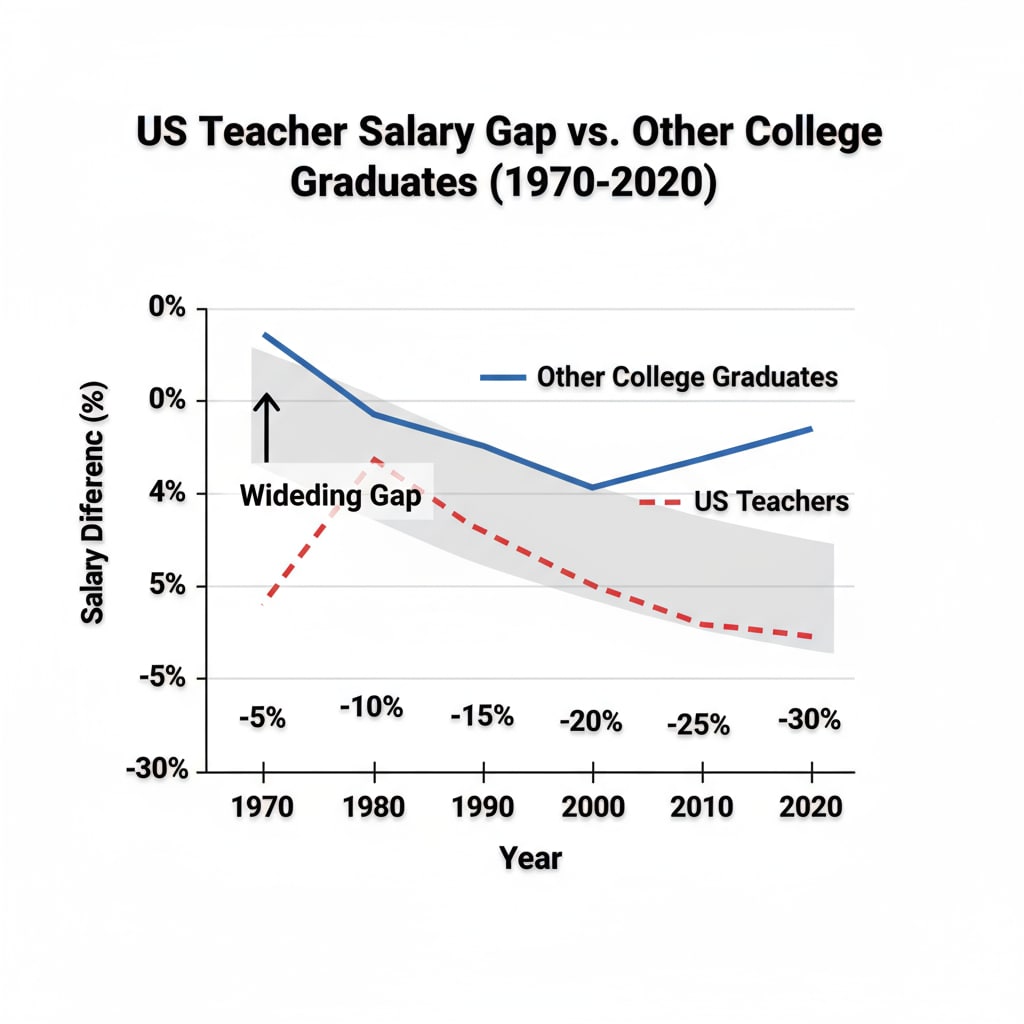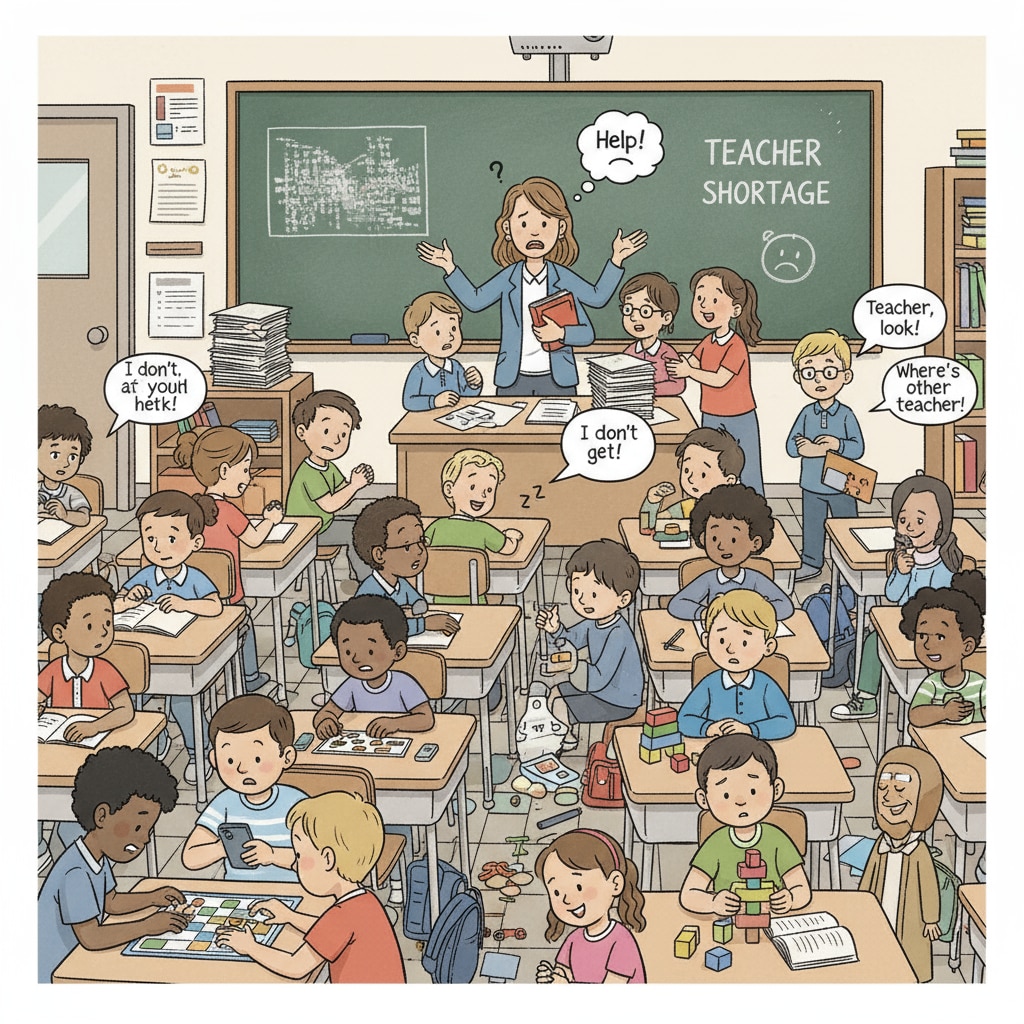The issue of teacher salaries, income gap, and teacher shortage in the United States has been gaining increasing attention. The salary disparity between teachers and other college-graduate professionals is reaching alarming levels.
The Alarming Income Gap
The income gap between US teachers and other college-graduate professionals has been steadily growing. In 2024, it has reached a staggering 37%, a far cry from the 5%-12% seen 40 years ago. This significant increase indicates a deepening problem in the labor market for educators. Data from the National Center for Education Statistics shows the long-term trend of this growing gap. As a result, fewer people are choosing teaching as a profession.

Consequences of the Salary Disparity
The widening salary gap has led to a severe teacher shortage crisis. Many talented individuals who could have become excellent teachers are opting for more lucrative careers. This shortage not only affects the number of teachers available but also the quality of education in K12 schools. With fewer teachers, class sizes may increase, and students may not receive the individualized attention they need. The National Education Association has been highlighting the negative impacts of this shortage on students’ learning outcomes.

In addition, the teacher shortage can lead to a vicious cycle. As the quality of education declines, it becomes even more difficult to attract and retain high-quality teachers. This further exacerbates the problem of the income gap and the overall state of education in the US.
Readability guidance: The key points here are the growth of the income gap and its consequences. The first H2 focuses on the gap itself, while the second looks at the results. Transition words like ‘as a result’ and ‘in addition’ help connect ideas. Short paragraphs and clear explanations make the content accessible.


